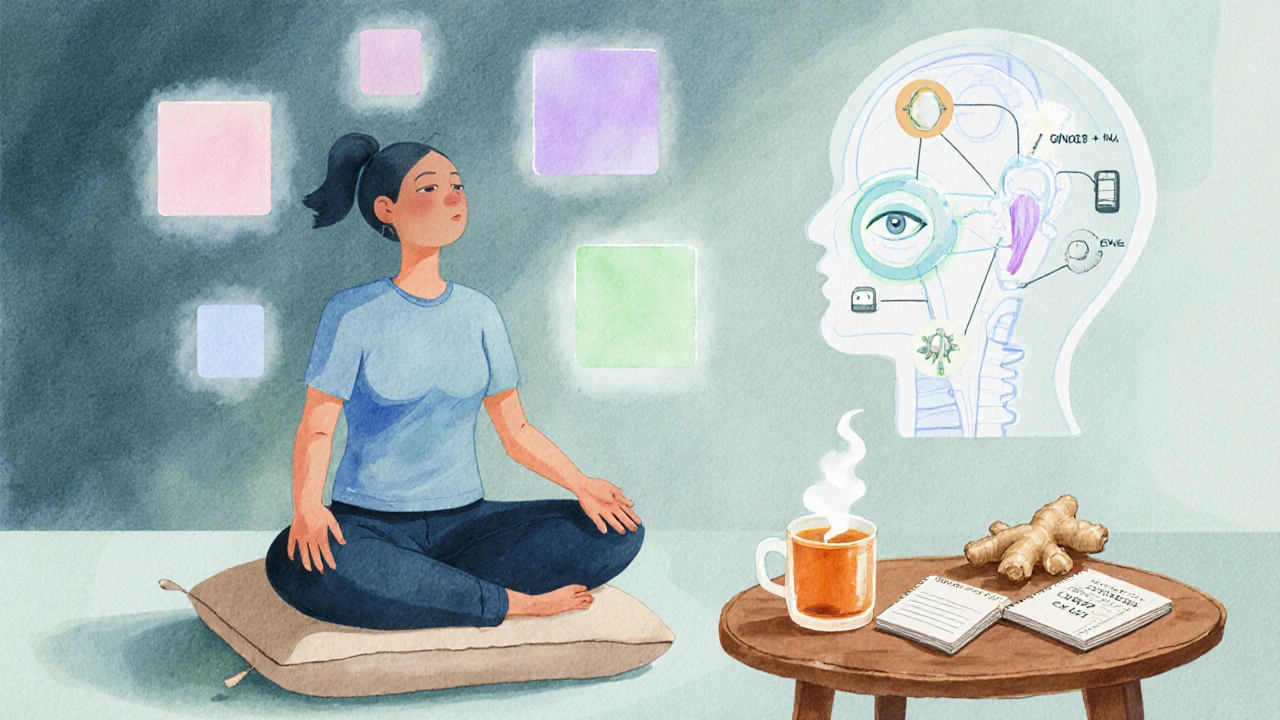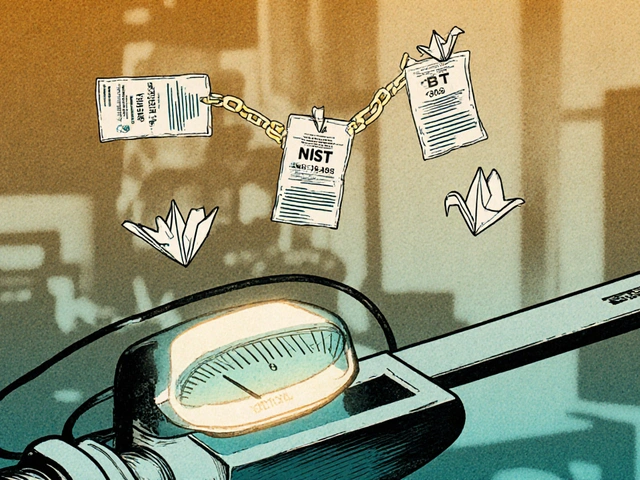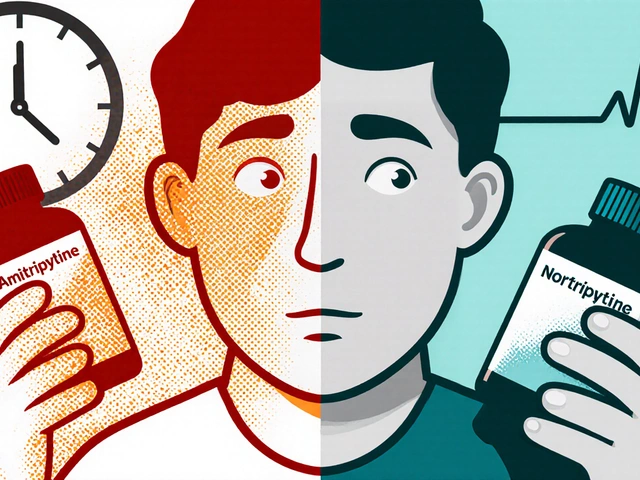Imagine you're on a winding road trip, the car sways, and a knot of worry tightens in your chest. Suddenly, a wave of nausea hits, and you realize you're battling both motion sickness and a surge of anxiety.
Motion sickness is a condition that causes dizziness, nausea, and cold sweats when the brain receives conflicting signals about movement from the eyes, inner ear, and muscles.
Anxiety is a persistent feeling of worry or fear that can amplify physical symptoms, making the experience of motion sickness feel even worse.
Key Takeaways
- Identify overlapping triggers of motion sickness and anxiety.
- Use breathing, grounding, and vestibular techniques before you travel.
- Choose non‑medication options first; medications are a backup.
- Combine short‑term relief with long‑term anxiety management.
- Seek professional help if symptoms persist or interfere with daily life.
Why Motion Sickness and Anxiety Often Appear Together
The inner ear’s vestibular system detects motion and helps keep balance. When it sends mixed messages to the brain, you feel dizzy - that’s the core of motion sickness. Anxiety spikes the body’s stress hormones, especially cortisol, which can heighten the brain’s perception of nausea and dizziness. The two loops feed each other, creating a vicious cycle.
Spotting Your Personal Triggers
Not every car ride triggers the same response. Keep a simple log:
- Mode of transport (car, boat, plane).
- Duration and speed of movement.
- Pre‑travel stress level (work deadline, health worries).
- Food & drink intake (heavy meals, caffeine, alcohol).
- Environment (poor ventilation, strong smells).
Over a few weeks you’ll notice patterns - maybe you’re fine on short drives but a long ferry ride with an empty stomach sends you spiraling.

Non‑Medication Strategies That Work for Both Issues
These techniques target the root causes without side effects.
Breathing and Grounding
Box breathing (inhale 4seconds, hold 4, exhale 4, hold 4) calms the autonomic nervous system, reducing anxiety‑driven hyperventilation that can worsen motion sickness.
Vestibular Conditioning
Vestibular rehabilitation exercises such as head‑tilt moves and focusing on a fixed point train your brain to resolve conflicting motion cues. Practicing 5minutes a day for two weeks can halve nausea episodes.
Dietary Helpers
Ginger (fresh, tea, or capsules) contains gingerol, which studies in 2024 show reduces nausea severity by 30% on average. Pair it with a light snack low in fat to keep blood sugar stable.
Cognitive Behavioral Techniques
Cognitive Behavioral Therapy (CBT) teaches you to reframe catastrophic thoughts (“I’ll vomit and embarrass myself”) into realistic statements, lowering the anxiety spike that amplifies motion symptoms.
Environmental Tweaks
- Seat choice: sit in the front of a car, mid‑deck of a ship, or over the wings on a plane.
- Ventilation: fresh air or a fan pointing at your face.
- Visual focus: look at the horizon or a distant fixed point.
- Limit screen time: phone or reading can increase visual‑vestibular conflict.
Medication Options - When to Use Them
If non‑medication steps aren’t enough, short‑term drugs can provide relief. Talk to a pharmacist or doctor about dosage and timing.
Antihistamines such as dimenhydrinate or meclizine block histamine receptors in the vestibular nuclei, reducing nausea. Take them 30minutes before travel; drowsiness is a common side effect.
Scopolamine patches deliver a steady dose through the skin, lasting up to 72hours. They’re especially useful for long cruises.
Prescription anti‑anxiety meds (e.g., low‑dose benzodiazepines) can calm severe panic that triggers motion sickness, but they carry dependence risks and should be a last resort.
| Strategy | How It Works | Typical Use | Pros | Cons |
|---|---|---|---|---|
| Box Breathing | Regulates autonomic nervous system | Any travel, before symptoms start | No side effects, quick | Requires practice |
| Vestibular Rehab | Re‑trains brain’s motion processing | Daily pre‑travel routine | Long‑term reduction in nausea | May cause temporary dizziness |
| Ginger | Gingerol acts on stomach receptors | 30min before travel | Natural, easy to carry | Effect varies by person |
| Antihistamine (Dimenhydrinate) | Blocks vestibular histamine receptors | 30min before travel, up to 4h relief | Effective for most people | Drowsiness, dry mouth |
| Scopolamine Patch | Delivers anticholinergic drug through skin | Apply night before long trips | Lasts up to 72h | Vision blur, dry eyes |
When to Seek Professional Help
If you experience any of the following, schedule a visit:
- Persistent vomiting for more than 24hours.
- Severe anxiety that interferes with work or relationships.
- Loss of balance or fainting episodes.
- Need for repeated medication use (more than twice a month).
A primary care physician can rule out inner‑ear infections, while a psychologist can guide CBT or exposure therapy tailored to travel‑related anxiety.

Practical Checklist Before Your Next Trip
- Log past triggers (see earlier section).
- Choose seat and ventilation plan.
- Pack ginger, anti‑nausea meds, and a water bottle.
- Practice box breathing for 5minutes.
- Do a quick vestibular warm‑up: stare at a distant point, then turn head side‑to‑side five times.
- If using medication, set an alarm 30minutes before departure.
- Review anxiety coping script (e.g., “I feel uneasy, but it will pass”).
Long‑Term Strategies for Reducing Both Conditions
Regular physical activity, especially balance‑focused exercises like yoga or tai chi, keeps the vestibular system healthy. Maintaining a consistent sleep schedule reduces baseline cortisol, making you less prone to anxiety spikes. Finally, consider a brief course of CBT with a therapist who specializes in phobias; the skills you learn apply to any motion‑related situation.
Frequently Asked Questions
Can anxiety cause motion sickness even on calm rides?
Yes. Anxiety amplifies the brain’s response to subtle motion cues, so even a short, smooth drive can feel queasy if you’re already stressed.
Is ginger safe for children?
Ginger in small doses (e.g., a few slices of fresh ginger or a children’s ginger tea) is generally safe for kids over 6years, but always check with a pediatrician first.
How long before travel should I take antihistamines?
Take them about 30minutes before you start moving. This gives the medication time to reach peak blood levels and block the vestibular signals that trigger nausea.
Can I use a scopolamine patch if I have glaucoma?
No. Scopolamine can increase intra‑ocular pressure, worsening glaucoma. Talk to an eye doctor before using it.
What is the best breathing technique for a sudden wave of nausea?
The 4‑7‑8 technique works well: inhale through the nose for 4seconds, hold for 7, exhale slowly through the mouth for 8. It slows heart rate and calms the gut.








17 comments
Kiersten Denton
I’ve tried the box‑breathing trick on a weekend road trip and it kept the nausea at bay.
Karl Norton
While the article lists a lot of tips, most people won’t bother reading the whole thing before getting on a bus. Just pick one or two simple hacks-like sitting in the front seat and breathing deep-and stick with them. Over‑complicating the routine only adds more anxiety. The “vestibular conditioning” section sounds like a physiotherapy class, which most travelers won’t have time for. Bottom line: simplify, test, repeat.
Ashley Leonard
Thanks for the detailed rundown! I’ve been logging my trips in a notebook and noticed that my nausea spikes when I drink coffee right before a flight. Cutting caffeine out an hour beforehand makes a huge difference. I also like the ginger tea suggestion-just a teaspoon of fresh ginger in hot water works like a charm. The 4‑7‑8 breathing pattern is easy to remember and less conspicuous than box breathing. For vestibular rehab, I start with head‑tilt exercises while watching a stationary point in the car. It felt weird at first, but after a week the queasy feeling dropped by about half. Keep sharing these practical hacks; they really help.
Emma Howard
Wow!!! This guide is a treasure chest of tricks!!! I love the combination of ginger, fresh air, and focusing on the horizon!!! The checklist at the end is so handy-pack the ginger, set an alarm, do the breathing drills!!! Seriously, this will save so many trips from turning into disaster zones!!!
dee gillette
Despite the comprehensive nature of the recommendations, one must question whether the emphasis on non‑pharmacological methods inadvertently dismisses the efficacy of evidence‑based medications. Clinical studies have demonstrated that antihistamines provide rapid relief for a majority of sufferers, and their side‑effects are generally manageable. To imply they are merely a “backup” could mislead patients who need prompt symptom control. A balanced approach should present pharmacologic options as co‑primary, not subsidiary.
Jasin P.
Ah, the age‑old debate: natural vs. pharma. Let’s all pretend ginger is a miracle herb while ignoring that many people still end up on the bathroom floor because “natural” didn’t work fast enough. If you’re already queasy, you don’t have time to brew tea, you need something that kicks in while you’re still in the aisle. So, dear readers, enjoy the yoga and poetry, but keep a real pill in your bag.
Lily Đàn bà
Enough with the wishful thinking! You can’t fight motion sickness with mindfulness alone-most of us are strapped into a cramped seat, lights flashing, engine roaring, and you expect us to “re‑train” our brains in ten minutes? That’s absurd. The only realistic solution is a proven anti‑histamine or a scopolamine patch. Anything else is just feel‑good fluff for the clueless.
Joseph O'Sullivan
Think about it like this: the body is a ship and the mind is the captain. If the captain keeps shouting “storm ahead!” while the crew is busy adjusting the sails, you’ll end up capsizing. So maybe the real trick isn’t just a patch or ginger, but calming the captain’s voice. A quick joke, a song, anything to mute that inner alarm-and suddenly the seas feel smoother.
Conor McCandless
When I first boarded a ferry for a weekend getaway, the slightest sway set off a cascade of dread that felt like an internal earthquake. I tried the recommended box breathing, but my mind raced faster than the ocean’s waves, and the nausea surged like a rogue tide. Then I remembered a passage from an old wellness book: “balance the body, and the mind will follow.” I decided to combine three elements-vestibular conditioning, ginger, and a simple mantra. First, I performed the head‑tilt exercises while the ship rocked, letting my inner ear acclimate to the motion. Next, I sipped a warm ginger infusion, feeling the heat settle in my stomach like a calming ember. Finally, I whispered a quiet phrase, “I am steady, I am safe,” each time the ship’s pitch threatened to wobble my resolve. The result was astonishing: the queasy waves receded, replaced by a gentle steadiness I hadn’t anticipated. Over the next hour, the nausea dropped from a solid six out of ten to a barely noticeable two. By the time we docked, I was able to walk off the deck without clutching the rail. This experience taught me that the synergy of physical conditioning, natural remedies, and mental anchoring can outperform any single method. It also proved that our bodies respond to consistency; a few minutes of daily vestibular drills made a massive difference on that trip. I now schedule a short routine before every journey, regardless of distance. The lesson resonates beyond motion sickness-any challenge can be softened by a multi‑pronged approach. So, dear travelers, consider weaving these practices together rather than picking one in isolation.
kat gee
Great list, but honestly, if you’ve got ginger and a seat by the window, you’re already winning.
johnson mose
Spot on with the seat‑selection tip-sitting over the wings on a plane is practically a built‑in anti‑nausea device. The airflow vents right above you, and the visual horizon is less chaotic. Pair that with a light snack of crackers and a dash of ginger, and you’ve got a recipe that even the most motion‑sick traveler can tolerate. Also, don’t underestimate the power of a good playlist; rhythmic music can synchronize your breathing and calm the nerves. Keep the phone screen tucked away; the flicker adds visual‑vestibular conflict. Lastly, if you ever feel a wave coming on, pause, close your eyes, and focus on feeling your feet on the floor-that grounding trick roots you instantly.
Ria M
In accordance with the physiological mechanisms outlined earlier, it is imperative to acknowledge that cortisol levels, which surge during anxiety, directly potentiate vestibular sensitivity, thereby amplifying nausea. Consequently, any intervention that attenuates cortisol-such as mindfulness or controlled breathing-should be prioritized. Moreover, empirical evidence from recent trials demonstrates that a pre‑travel dose of dimenhydrinate reduces symptom incidence by approximately forty percent. Nevertheless, should one opt for pharmacotherapy, meticulous adherence to dosage timing is essential to circumvent excessive drowsiness. The integration of these strategies, when executed with rigor, yields optimal outcomes.
Michelle Tran
Love the tips! 😊 Ginger, breathing, and a good seat are a winning combo. 👍🚗💨
Caleb Ferguson
I’d add that staying hydrated with plain water, rather than sugary drinks, can lessen the intensity of motion‑induced nausea. Dehydration often compounds dizziness, so a steady sip throughout the journey is advisable.
Delilah Jones
Just a heads‑up: avoid heavy meals right before traveling; they’re a major trigger for many.
Pastor Ken Kook
Yep, stick to light snacks – it really helps! :)
Jennifer Harris
I’m curious whether anyone has tried pairing a short meditation app session with the vestibular exercises. Does the combination enhance efficacy?